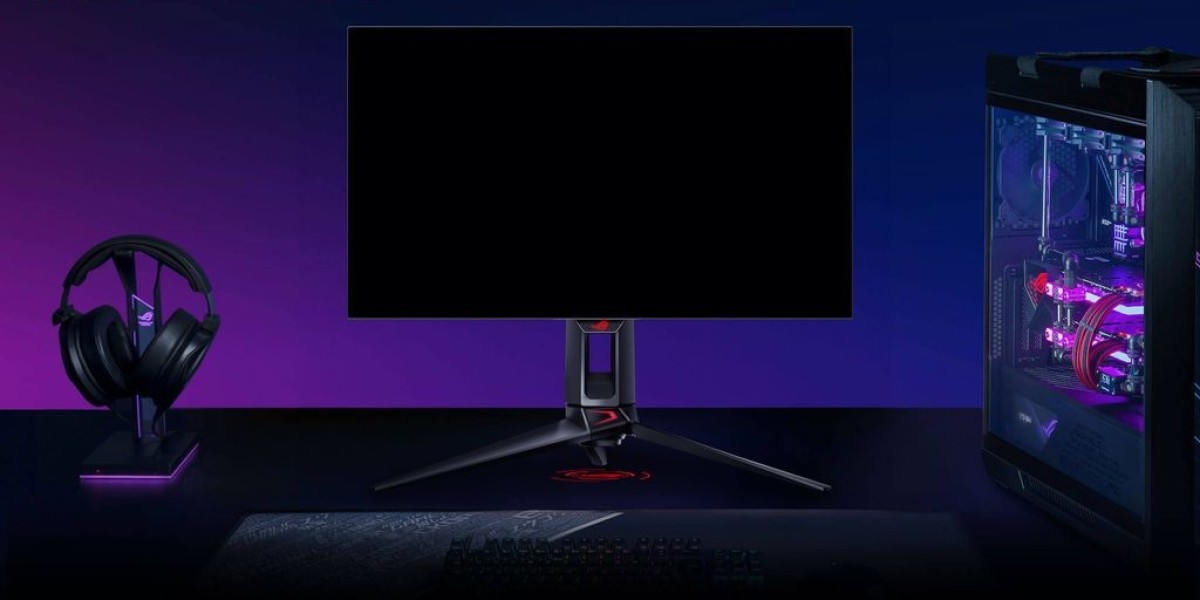Introduction: The Rise of OLED in Professional and Gaming Worlds
As we step into 2025, OLED gaming monitors have reached a new level of performance, challenging the supremacy of professional displays traditionally used in media production, color grading, design, and content creation. The question is no longer if OLED gaming monitors are good enough — it’s where they can replace professional monitors and where they still fall short.
In this article, we offer a deep technical and practical comparison between OLED gaming monitors and professional-grade displays, highlighting the advantages, limitations, and ideal use cases of each.
Display Technology Breakdown: OLED vs IPS and Mini-LED
OLED panels use self-emissive pixels, which allow for true blacks, infinite contrast, and instantaneous pixel response times. In contrast, IPS and Mini-LED professional monitors depend on backlighting systems that may create blooming, haloing, or limited local dimming.
In 2025, OLED monitors now offer:
10-bit color support
Full DCI-P3 and up to 99% AdobeRGB coverage
HDR10+, Dolby Vision, and VESA DisplayHDR True Black certifications
240Hz–480Hz refresh rates with near-zero response time
Professional monitors still lead in:
Peak brightness (up to 2000+ nits with Mini-LED)
Color uniformity
Hardware LUT calibration
SDI, Thunderbolt, and other production-level I/O
Color Accuracy and Calibration: Still a Pro Domain?
Color accuracy is the cornerstone of professional workflows. In 2025, OLED gaming monitors have made significant improvements in Delta E values, with some models achieving ΔE < 1.5 out of the box. However, professional monitors like the Eizo ColorEdge, BenQ PD series, and Apple Pro Display XDR offer:
Factory-calibrated hardware LUTs
Consistent grayscale and color uniformity
Dedicated color profiling tools
While OLED monitors now support third-party calibration tools, they lack built-in color calibration sensors and dedicated hardware color engines. For photo editing, printing, and broadcast work, this remains a clear advantage for professional displays.
Contrast and Black Levels: OLED Takes the Lead
Where OLED gaming monitors undeniably dominate is in contrast and black reproduction. Each pixel can be turned off individually, providing perfect blacks and a contrast ratio that no IPS or Mini-LED panel can replicate.
This gives OLED a massive edge for:
HDR mastering
Cinematic color grading
Gaming in dark scenes
Watching or editing dark content in ambient rooms
Professional monitors with Mini-LED backlights try to match this, but blooming artifacts around bright objects in dark scenes remain a concern.
Motion Clarity and Response Time: OLED Wins for Real-Time Content
OLED monitors now feature:
0.03ms response time
240Hz to 480Hz refresh rates
VRR (G-SYNC, FreeSync Premium Pro, HDMI 2.1 VRR)
These features benefit:
Animators
VFX professionals
Gamers and streamers
Video editors handling fast-paced content
Professional displays still top OLEDs in frame persistence for static image quality, but for anything in motion, OLED is clearly ahead in 2025.
Burn-In: Still a Risk in Static Workflows
Despite improvements, burn-in remains a concern for OLED panels. Static elements such as software UI, editing toolbars, or broadcast overlays can create image retention over time.
Manufacturers have added:
Logo dimming
Pixel shifting
Screen savers and auto-dimming modes
Advanced refresh cycles
Still, for long-term static image work, professional monitors built on IPS or Mini-LED panels are more durable and reliable, offering years of continuous use without degradation. https://www.choose.tv/us/news/oled-monitors-vs-professional-equipment-do-gaming-screens-match-expensive-displays_AML
Connectivity and Workflow Integration: Pro Monitors are More Versatile
Professional displays offer:
Thunderbolt 4 and USB-C with 90–140W PD
SDI for live production
Multiple HDMI 2.1 and DisplayPort 2.1 inputs
Daisy-chaining and multiple monitor management
OLED gaming monitors typically offer:
HDMI 2.1
DisplayPort 1.4 or 2.1
Basic USB hubs
Some USB-C support
While sufficient for most creators, professional workstations demand seamless I/O, often only available in high-end pro monitors.
Ergonomics, Build, and Design: Aesthetic vs Functional
Gaming OLED monitors focus on aesthetics, often featuring:
RGB lighting
Curved panels
Sleek, aggressive design
High-gloss or matte finishes
Professional displays prioritize:
Precision tilt, pivot, and height adjustments
VESA compliance
Matte anti-reflective coatings
Minimalistic bezels for multi-display setups
For long editing sessions or color-critical work, ergonomic design and glare reduction still favor pro monitors.
Price and Value in 2025: OLED Delivers Strong ROI
OLED gaming monitors in 2025 are available from $700 to $1600, delivering:
Excellent HDR
Fast performance
Wide color coverage
Decent calibration support
Professional monitors start at $1500 and can exceed $6000, offering:
Elite-grade precision
Workflow tools
Extended warranties and support
For budget-conscious creators, OLED monitors offer incredible value — particularly for video editing, content creation, and casual color work.
Who Should Use What in 2025?
Choose OLED Gaming Monitors If You Are:
A content creator who values HDR and fast refresh rates
A YouTuber or streamer who edits gameplay or dynamic footage
An independent filmmaker working in HDR10/Rec.709
A budget-conscious designer who wants great visuals at lower cost
Stick with Professional Displays If You Are:
A photographer requiring AdobeRGB and soft proofing
A cinema colorist using HDR10+, Dolby Vision, or ACES workflows
A broadcast technician needing SDI and reference-grade accuracy
A print media expert who demands precise Pantone matching
Conclusion: Can OLED Gaming Monitors Replace Professional Displays in 2025?
In 2025, OLED gaming monitors are now a viable option for many creative professionals. They offer superior motion clarity, outstanding contrast, and excellent HDR capabilities. However, when it comes to ultra-precise color accuracy, burn-in resistance, and workflow integration, professional displays still hold the crown.
Ultimately, the right choice depends on your specific use case, reliability needs, and color-critical workflow requirements. For most creators outside of broadcast and print, modern OLED monitors provide an affordable and visually stunning alternative.



